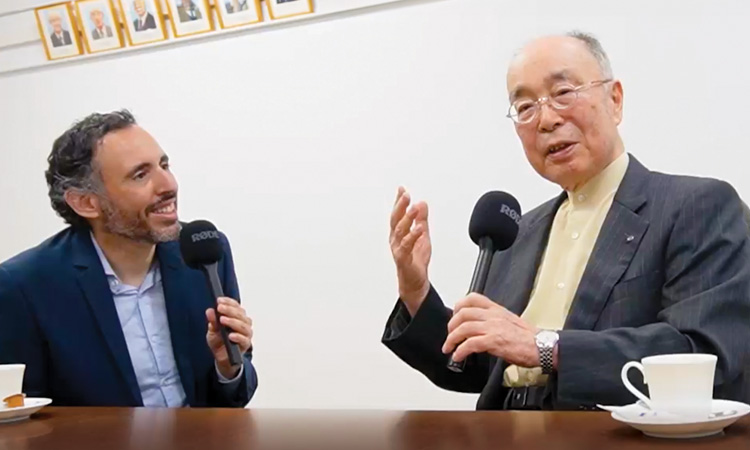 Optica CTO Jose Pozo (left) interviews Kenichi Iga at the Tokyo Institute of Technology, Japan. [Optica Archives]
Optica CTO Jose Pozo (left) interviews Kenichi Iga at the Tokyo Institute of Technology, Japan. [Optica Archives]
Frederic Ives Medal/Jarus W. Quinn Prize
The highest award conferred by Optica, for overall distinction in optics
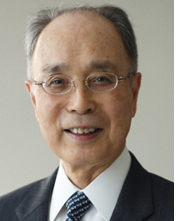
Kenichi Iga
Tokyo Institute of Technology (Tokyo Tech), Japan
For pioneering contributions and visionary leadership in the field of semiconductor lasers and optoelectronics and a dedication to training and educating future generations
Kenichi Iga received his D.Eng. degree from Tokyo Tech and joined its Precision and Intelligence (P&I) Laboratory in 1968, eventually becoming the Teiichi Yamazaki Chair Professor. He served as director of Institute Library and director of the P&I Microsystem Research Center, executive director of the Japan Society for the Promotion of Science and president of Tokyo Tech.
Iga’s work has significantly impacted high-speed communications. Since his first demonstration of a VCSEL in 1979 at Tokyo Tech, he has established the fundamental technical and theoretical bases for the lasers and inspired much research in the field. Today, approximately 75% of all telecommunications lasers sold are VCSELs. Iga is also a mentor, advisor and dedicated volunteer, working to strengthen the field through high-quality training and international collaboration.
Iga is the author of several books—including Fundamentals of Microoptics and Surface Emitting Lasers and VCSEL Industry—and of more than 450 papers. He is a Fellow of Optica, IEEE, the Institute of Electronics, Information and Communication Engineers (IEICE), the Japan Society of Applied Physics (JSAP) and the Laser Society.
He has received numerous awards, including the Sakurai Memorial Prize from the Optoelectronic Industry and Technology Development Association (OITDA), the Ichimura Award, the Asahi Prize, the Fujiwara Award, the C&C Prize, the IEE Premium Award, the John Tyndall Award (jointly presented by Optica and IEEE Photonics Society), the IEEE Daniel E. Noble Award, the Rank Prize, 2013 Bower Award and Prize in Science from the Franklin Institute, and 2021 IEEE Edison Medal. He received the Purple Ribbon Medal from the Japanese Emperor in 2001 and was named a 2022 Person of Cultural Merit by the Japanese government.
Esther Hoffman Beller Medal
In recognition of outstanding contributions to education in optical science and engineering
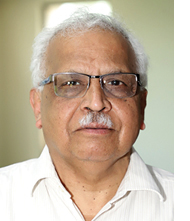
Anurag Sharma
Indian Institute of Technology Delhi (IIT Delhi), India
For outstanding contributions to optics and photonics teaching, research and leadership and in creating India’s first dedicated Optics and Photonics Centre at Indian Institute of Technology Delhi
Anurag Sharma received his Ph.D. from IIT Delhi, where he has taught for more than 40 years and is now emeritus professor of optics and photonics and physics. He was an Alexander von Humboldt Fellow at the University of Karlsruhe (now KIT), Germany, a senior associate of the Abdus Salam International Center for Theoretical Physics, Trieste, Italy, and a visiting professor at the University of Saint-Etienne, France.
Sharma’s research has been in the area of modeling and analysis of optical waveguides and imaging devices and components, and has included developing several new techniques for propagation of optical rays and waves. In addition to his seminal role in creating the Optics and Photonics Centre at IIT Delhi, Sharma has played a key role in nurturing the master of technology (M.Tech.) degree program in applied optics.
Sharma received the Excellence in Teaching Award and Lifetime Achievement Award from IIT Delhi. He also received the Shanti Swarup Bhatnagar Prize for his research contributions. He is a Fellow of Optica, the Indian National Science Academy (INSA), the National Academy of Sciences, India (INSAI), the Indian Academy of Sciences (IAS) and the Indian National Academy of Engineering (INAE), and a Distinguished Fellow and past president of the Optical Society of India (OSI).
Max Born Award
In recognition of contributions to physical optics

Andrea Alù
City University of New York (CUNY), USA
For pioneering contributions to linear, nonlinear and nonreciprocal photonic metamaterials
Andrea Alù is a Distinguished Professor at CUNY, the Einstein Professor of Physics at the CUNY Graduate Center and the founding director of the Photonics Initiative at the CUNY Advanced Science Research Center. His research interests span wave optics, metamaterials, applied electromagnetics, nanophotonics, polaritonics and acoustics.
Alù is a full member of the International Union of Radio Science, a Life Fellow of the New York Academy of Sciences, and a Fellow of Optica, the National Academy of Inventors, the American Association for the Advancement of Science (AAAS), IEEE, the Materials Research Society, SPIE and the American Physical Society (APS). He has been named a highly cited researcher in the Clarivate Web of Science every year since 2017.
Additional recognitions for his research activities include Optica’s Adolph Lomb Medal, the Alan T. Waterman Award of the US National Science Foundation (NSF), SPIE’s Mozi Award, the IEEE AP-S Distinguished Achievement Award, the Brillouin Medal, the Blavatnik National Award in Physical Sciences and Engineering, the AAAFM Heeger Award, the Dan Maydan Prize in Nanoscience and the IEEE Kiyo Tomiyasu Award. He has served as the editor-in-chief of Optical Materials Express since 2022.
Stephen D. Fantone Distinguished Service Award
In recognition of outstanding service to Optica
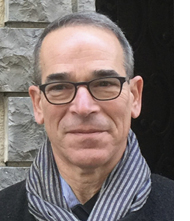
Joseph Mait
USA
For decades of dedicated service and leadership across multiple Optica programs, including introducing innovative programs that support diversity, equity and inclusion awareness processes for Optica publications and conferences
Joseph Mait currently works part-time for the University of Delaware, USA, and teaches optics as an adjunct professor at the University of Maryland and the University of Rochester, USA. His research includes surface optical elements such as diffractive and metamaterial-based elements, graded-index optics, and computational imaging, a field he helped define in the 1990s.
An active and thoughtful leader, Mait has worked tirelessly to help Optica meet the needs of its diverse community. His work on the Member and Education Services Council introduced a new, more accessible dues structure for society members in developing nations. He helped expand the awards portfolio with the establishment of the Emmett N. Leith Medal. He has made significant contributions to Optica’s meetings, including the founding of the Computational Optical Sensing and Imaging topical meeting. Among his many roles within the Optica Publishing Group, he is a former editor-in-chief of Applied Optics and a former chair of the Publications Council, and he chaired the Board of Editors for an unprecedented five years.
Mait retired in 2018 from the U.S. Army Research Laboratory (ARL) after 30 years of federal service. As ARL’s chief scientist in his last five years, he was responsible for the laboratory’s technical forecasting and strategic vision. He has held visiting positions at the Universität Erlangen-Nürnberg, Germany, the National Defense University in Washington, DC, USA, and the Leibniz Institute for Photonic Technologies in Jena, Germany. He is a Fellow of Optica and SPIE and a life senior member of IEEE.
Michael S. Feld Biophotonics Award
In recognition of innovative and influential contributions to the field of biophotonics, regardless of career stage
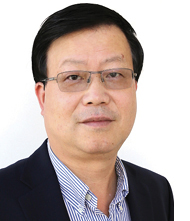
Zhongping Chen
University of California, Irvine, USA
For pioneering research, development, and clinical translation of Doppler optical coherence tomography (OCT), OCT angiography, OCT elastography, and multimodality intravascular imaging
Zhongping Chen received his B.S. degree from Shanghai Jiao Tong University, China, and his M.S. and Ph.D. degrees from Cornell University, USA. He is currently a professor of biomedical engineering and director of the F-OCT Laboratory at the University of California, Irvine. He is a co-founder and chairman of the board at OCT Medical Imaging, Inc.
A pioneer in biophotonics, Chen is recognized for groundbreaking contributions to the development of Doppler OCT (D-OCT) and OCT angiography (OCTA). The phase-resolved D-OCT and Doppler variance imaging developed by Chen’s group have been widely used not only as powerful research tools for imaging and quantifying vascular changes in neuroscience and cancer research, but also in clinical applications such as ophthalmology.
Chen’s work integrates fundamental research, technological development, biomedical studies and clinical applications. He has made significant impacts in translating numerous optical imaging technologies to clinical applications. These include imaging and diagnosis of laryngeal cancer and neonatal subglottic stenosis, airway injury and lung cancer, oral cancers, obstructive sleep apnea, ocular diseases, cardiovascular diseases and brain aneurysms. Chen has authored more than 300 peer-reviewed papers and review articles and holds over 25 patents in biomaterials, biosensors and biomedical imaging. He is a Fellow of Optica, the American Institute of Medical and Biological Engineering (AIMBE) and SPIE.
Joseph Fraunhofer Award/Robert M. Burley Prize
In recognition of significant research accomplishments in the field of optical engineering
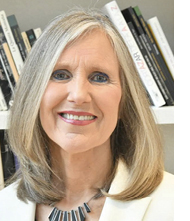
Carmen Menoni
Colorado State University, USA
For seminal contributions to the materials aspects and engineering of amorphous oxides for optical coatings of high-intensity lasers and gravitational-wave detectors
Carmen Menoni is University Distinguished Professor in the Departments of Electrical and Computer Engineering and Chemistry at Colorado State University. She obtained her Ph.D. in physics from Colorado State University and shortly after joined its faculty in the Department of Electrical and Computer Engineering.
Menoni’s group has made recognized contributions to optics in two areas. Her research is pushing the frontiers in dielectric coatings for ultra-high-intensity lasers and gravitational-wave detectors. This work is supported by fundamental studies of network organization in amorphous dielectrics and its impact in the optical and structural properties of thin films. Menoni has also pioneered the use of bright extreme-ultraviolet laser beams in novel nanoscale imaging and spectrometry methodologies.
She serves as director of a recently established inertial-fusion energy hub, RISE, supported by the US Department of Energy’s IFE STAR Program, Fusion Energy Science. A partnership among universities, US national laboratories and industry, the RISE hub provides the framework to investigate innovative laser interaction and target technologies with the goal of accelerating inertial-fusion energy and training the workforce that will support its practical implementation.
Menoni has received multiple awards including the IEEE Women in Photonics Excellence Award and the Willis Lamb Award for Laser Science and Quantum Optics. She is a Fellow of Optica, IEEE, APS, AAAS and SPIE. Menoni has served the optics and photonics community through her participation in prominent editorial and governing boards.
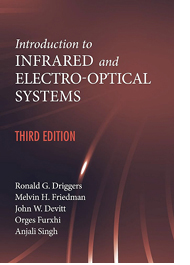
The Joseph W. Goodman Book Writing Award
In recognition of a recent and influential book in the field of optics and photonics that has contributed significantly to research, teaching, business or industry (co-presented with SPIE)
Ronald G. Driggers, Melvin H. Friedman, John W. Devitt, Orges Furxhi, Anjali Singh
For their book Introduction to Infrared and Electro-Optical Systems, 3rd Edition
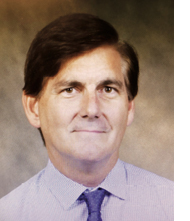
Ronald G. Driggers is a professor at the University of Arizona’s Wyant College of Optical Sciences, USA, and works in the areas of electro-optical and infrared imaging systems. Previously, he was superintendent of the Optical Sciences Division at the US Naval Research Laboratory, managing the efforts of more than 200 scientists and engineers and over US$100 million in research and development programs. Driggers is the author of five books on infrared and electro-optics systems and was editor-in-chief of the Encyclopedia of Optical Engineering. A Fellow of SPIE and Optica, Driggers served as editor-in-chief of Optical Engineering (2010–15) and of Applied Optics (2015–21).
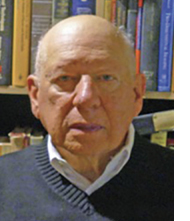
Melvin H. Friedman, retired after 48 years of government service, is an affiliate faculty member of George Mason University, USA, working on traffic-light coordination. He is the primary inventor of eight patents; helped develop the first digital-imaging radiometer that worked simultaneously in the 3-to-5- and 8-to-12-micron bands; and was the optics editor for the Encyclopedia of Optical Engineering. Friedman has a wide range of experience across nuclear physics (beta ray spectrometry, nuclear scattering, application of neutron activation analysis to food and drug safety), automation (neutron activation data collection and reduction), microscopy (scanning electron and electron microprobe), land-mine detection (using scattered electromagnetic waves), electro-optics (development of intelligence-gathering instruments) and modeling.
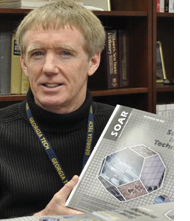
John W. Devitt is a principal fellow and chief engineer for RVS Tactical Products, USA. His current and previous responsibilities have spanned some of the largest and most significant infrared-detector programs, including EODAS, 3GEN FLIR and OPIR. He holds more than 20 patents and was a primary contributor to the Photonics Project web site (photonicsproject.org). Devitt was appointed to the US National Academy of Sciences in 2014. He is a Military Sensing Symposium Fellow and a Principal Fellow at Raytheon Corporation.
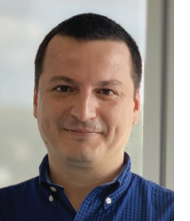
Orges Furxhi is a principal member of the technical staff at imec USA. His professional interests focus on passive and active imaging systems and their applications. Before joining imec, he was the director of engineering at St. Johns Optical Systems, USA, where he was responsible for camera product development. As a postdoctoral fellow at Duke University and the University of Memphis, USA, he developed several infrared, millimeter-wave and terahertz imaging systems.
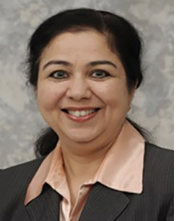
Anjali Singh was most recently vice president of payload at Planet Labs, USA. Previously, she was an engineering fellow/chief engineer at Raytheon for Advanced Tactical Programs, and held several lead positions at Northrop Grumman, including an IPT lead on a major space program, architect/SEIT lead of the Space Inertial Product Line at the Navigation Systems Division, and optics and controls products system engineering lead for the Airborne Laser Program. Her other experiences include roles at Inphi Corporation, USA, where she built an optical system testbed for 10-Gbps and 40-Gbps optical communication system components, and at JDS Uniphase, USA, where she developed EDFA and Raman amplifiers for long-haul communication systems.
Nick Holonyak Jr. Award
In recognition of contributions to optics based on semiconductor-based devices and optical materials, including basic science and technological applications
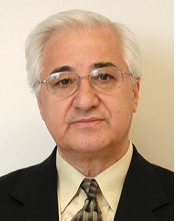
Theodore D. Moustakas
Boston University (BU), USA
For pioneering contributions to nitride semiconductor materials and optical devices that helped build the foundation for blue and UV LEDs
Theodore Moustakas received his Ph.D. from Columbia University, USA. He held research positions at Harvard University and Exxon Research Laboratory, USA, before joining BU as a professor of electrical and computer engineering with a joint appointment in the physics department. He is currently the BU inaugural Distinguished Professor of Photonics and Optoelectronics.
His research contributions cover a broad spectrum of topics in optoelectronic materials and devices, including nitride semiconductors, amorphous semiconductors, III–V compounds and diamond thin films. Intellectual property that resulted from his work in nitride semiconductors has been licensed to more than 40 companies, including major manufacturers and users of blue/UV LEDs and lasers.
Moustakas is a Fellow of Optica, APS, the Electrochemical Society, IEEE and the Materials Research Society; he was also elected a Charter Fellow of the National Academy of Inventors. He was granted an honorary doctoral degree from the Aristotle University, Greece, and he received the Molecular Beam Epitaxy Innovator Award from the North America MBE Society, the BU College of Engineering Distinguished Scholar Award and the BU Innovator of the Year Award.
Robert E. Hopkins Leadership Award
In recognition of significant impact on the field of optics or a significant contribution to society
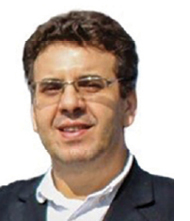
Kramer Akli
US Department of Energy, Office of Science, USA
For leadership and vision in establishing North America’s first high-intensity laser research network, providing students and scientists worldwide with access to state of the art high-power laser experimental facilities and photonics technologies
Kramer Akli received his Ph.D. from the University of California Davis, USA. While pursuing his Ph.D., he was awarded a fellowship to work at the Lawrence Livermore National Laboratory. Fueled by a passion for fusion and the boundless power of the sun, Akli found an unexpected connection between optics and fusion. It turned out that through intricate optical systems—including lasers with myriad components such as lenses, mirrors, crystals and amplifier slabs—fusion can be studied in laboratory conditions.
Akli joined the US Department of Energy’s Fusion Energy Sciences program in 2016. Driven by a commitment to addressing gaps in laser technology, he responded to the US National Academies report Opportunities in Intense Ultrafast Lasers and, recognizing the potential for a second laser revolution, founded LaserNetUS. This North America–based high-intensity-laser network gained recognition, securing its place among the notable achievements of 2018 within the DOE enterprise.
LaserNetUS serves as a model for scientific disciplines and has spurred the creation of other networks like ZnetUS and MagNetUS. The network partners with Laserlab Europe, facilities of the European Extreme Light Infrastructure (ELI), and institutions across South America and Australia, reflecting Akli’s global commitment to advancing optics and lasers through collaborative efforts. Akli is an Optica Fellow.
Edwin H. Land Medal
In recognition of pioneering work empowered by scientific research to create inventions, technologies and products (co-presented with the Society for Imaging Science and Technology)

Rama Chellappa
Johns Hopkins University (JHU), USA
For seminal contributions to the theory and practice of image/video processing and computer vision arenas resulting in inventions, technologies and systems that have improved the lives of many worldwide
Rama Chellappa received his Ph.D. from Purdue University, USA. He is currently a Bloomberg Distinguished Professor in the JHU departments of Electrical and Computer Engineering (Whiting School of Engineering) and Biomedical Engineering (School of Medicine), with a secondary appointment in the Department of Computer Science. At JHU, he is currently the interim co-director of the Data Science and AI Institute and is also affiliated with the Center for Imaging Science, Center for Language and Speech Processing, the Institute for Assured Autonomy and the Mathematical Institute for Data Science. He also holds a non-tenure position as a College Park Professor in the ECE department at the University of Maryland, USA.
Chellappa’s current research interests are artificial intelligence, computer vision, machine intelligence and signal and image processing. He is pushing the boundaries of image processing, solving problems and making a lasting impact on the field. He served as the editor-in-chief of IEEE Transactions on Pattern Analysis and Machine Intelligence, a Golden Core Member of the IEEE Computer Society, a Distinguished Lecturer of the IEEE Signal Processing Society and the president of the IEEE Biometrics Council. He also co-organized two incubator meetings for Optica.
Chellappa has received many recognitions for research, teaching, innovation, and mentoring of undergraduate students, including the K.S. Fu Prize, the IEEE Jack S. Kilby Signal Processing Medal, the IBM Faculty Development Award and the inaugural IEEE Biometrics Council Leadership Award. He was inducted into the US National Academy of Engineering and holds nine patents. He is a Fellow of Optica, IEEE, the Association for the Advancement of Artificial Intelligence, AAAS, the Association for Computing Machinery, the American Institute for Medical and Biological Engineering, the International Association for Pattern Recognition, the National Academy of Inventors and the Washington Academy of Sciences.
Sang Soo Lee Award
In recognition of outstanding leadership in founding or growing the optics and photonics community locally (co-presented with Optical Society of Korea)
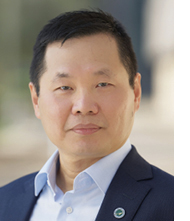
Boon S. Ooi
King Abdullah University of Science & Technology (KAUST), Saudi Arabia
For pioneering the field of optoelectronic devices and systems and growing the optics and photonics community in Saudi Arabia
Boon S. Ooi received his Ph.D. in electronics and electrical engineering from the University of Glasgow, UK. He is currently a professor of electrical and computer engineering at KAUST, where he previously served as director of the KACST Technology Innovation Center for Solid State Lighting. He is a founder of AK-Sens, a technology company focused on commercializing distributed fiber optic sensors for a wide range of applications in the oil and gas and agriculture industries.
Ooi has established several national and international photonic initiatives in Saudi Arabia, secured investments in photonics research, provided training to Saudi engineers and scientists and conducted public outreach to promote optics and photonics education to all levels. His research interests include high-speed optoelectronics and optical wireless communications. To date, he has trained 38 Ph.D. students and 17 postdocs and placed them in top positions in academia, industry and government worldwide.
An active volunteer, Ooi has served as an associate editor of Optics Express and senior editor of IEEE Photonics Journal; as a member of the OFC, CLEO and Latin America Optics and Photonics technical program committees; as CLEO Pacific Rim co-chair; and as the faculty advisor to the Optica Saudi student chapter. He is currently the editor-in-chief of IEEE Photonics Technology Letters. He is a Fellow of Optica, IEEE, SPIE, the Institute of Physics (IOP) and the National Academy of Inventors. He has 41 issued US patents. Other recognitions include the Khalifa International Award, the 2024 Oil and Gas Technical Innovation of the Year Award, the International Date Palm Innovation Prize and the PIFI Distinguished Scientist Award.
Emmett N. Leith Medal
In recognition of seminal contributions to the field of optical information processing
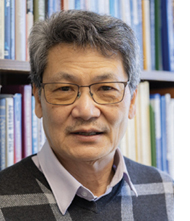
Ting-Chung Poon
Virginia Tech, USA
For seminal contributions to digital holography and optical information processing
Ting-Chung Poon received his M.S. and Ph.D. in electrical engineering from the University of Iowa, USA. He is currently a professor of electrical and computer engineering at Virginia Tech. His research interests include information optics and digital holography.
A leading scientist in the field of optical signal processing, Poon has made contributions reaching far beyond the lab through his books and publications, including Optical Scanning Holography with MATLAB (Springer, 2007) and (with coauthor Yaping Zhang) Modern Information Optics with MATLAB (Cambridge University Press and Higher Education Press, China, 2023).
Poon has served as division editor of Applied Optics and as associate editor-in-chief of Chinese Optics Letters, and is currently specialty chief editor of Frontiers in Photonics and editor of Applied Sciences. He was the founding chair of the Optica Digital Holography and 3-D Imaging topical meeting and has served as general chair of Optica’s annual meeting, Frontiers in Optics. Poon is a Life Fellow of IEEE and a Fellow of Optica, SPIE and IOP. His other awards include SPIE’s Dennis Gabor Award.
Ellis R. Lippincott Award
In recognition of contributions to vibrational spectroscopy (presented with the Coblentz Society and the Society for Applied Spectroscopy)

Steven Boxer
Stanford University, USA
For his development of vibrational Stark spectroscopy as a revolutionary tool to understand molecular interactions at the fundamental level, and for its application in enzyme catalysis to answer the century-old question of how enzymes work
Steven Boxer received his Ph.D. from the University of Chicago, USA. He is the Camille Dreyfus Professor in the Department of Chemistry at Stanford University and is currently the department chair.
His research interests are broadly in biophysics: the interface of physical chemistry, biology and engineering. Topics of current interest include electrostatics and dynamics in proteins, especially related to enzyme catalysis probed using the vibrational Stark effect, which was first developed in his lab; excited-state dynamics of green fluorescent protein (GFP), including split GFP, with applications in biotechnology; electron and energy transfer mechanisms in photosynthesis; and the fabrication of model membranes assemblies to simulate, manipulate and image biological membranes.
Boxer has served on the scientific advisory board of many startups in the general area of biotechnology and as an advisor to government, universities and nonprofit organizations around the world. He is the recipient of several awards including the Murray Goodman Memorial Prize, the Biophysical Society Founders Award and the Earle K. Plyler Prize for Molecular Spectroscopy. He is a Fellow of the American Academy of Arts and Sciences and the Biophysical Society and a member of the US National Academy of Sciences.
Adolph Lomb Medal
In recognition of noteworthy contributions made to optics at an early career stage
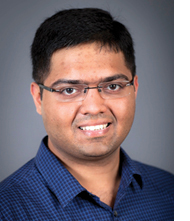
Deep Jariwala
University of Pennsylvania, USA
For seminal contributions to nano-optics of low-dimensional semiconductors and development of excitonic meta-materials
Deep Jariwala received his undergraduate degree in metallurgical engineering from the Indian Institute of Technology, Banaras Hindu University, India, and his Ph.D. in materials science and engineering from Northwestern University, USA. He is currently an associate professor and the Peter & Susanne Armstrong Distinguished Scholar in the Department of Electrical and Systems Engineering at the University of Pennsylvania. His research interests broadly lie at the intersection of new materials, surface science and solid-state devices for computing, sensing, optoelectronics and energy-harvesting applications. Prior to joining the University of Pennsylvania, he worked at Caltech’s Department of Applied Physics and Materials Science as a Resnick Prize postdoctoral fellow.
Jariwala’s research spans novel optical materials and optoelectronics devices. In particular, he focuses on excitonic and low-dimensional semiconductors. Over the past several years, his work at the University of Pennsylvania has highlighted unique aspects of light-confinement and formation of hybrid-light matter quasiparticles called exciton–polaritons in layered, atomically thin, excitonic semiconductors. His contributions have led to realization of excitonic metamaterials as well as atomically thin, near-perfect semiconducting absorbers for photovoltaics and photodetectors.
Jariwala has received multiple awards including the AVS Peter Mark Memorial Award, the IEEE Photonics Society Young Investigator Award, the IEEE Nanotechnology Council Early Career Award, the International Union of Pure and Applied Physics Early Career Scientist Prize in Semiconductors and the Bell Labs Prize.
Leonard Mandel Quantum Optics Award
In recognition of distinguished contributions to the foundations of statistical and quantum optics, and/or applications in advanced technologies. This is the inaugural presentation of the award, which was established in 2023 to honor Leonard Mandel for his seminal contributions to the field of quantum optics and for advancing our understanding of the quantum aspects of light.
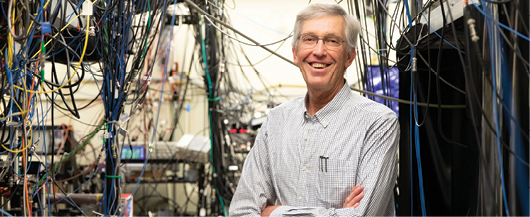
H. Jeff Kimble
California Institute of Technology, USA
For his groundbreaking work on the quantum interactions of light and matter, and establishing the core technologies based on squeezed light for quantum sensing and quantum communications
H. Jeff Kimble received his Ph.D. in physics from the University of Rochester, USA. He was an assistant, associate and full professor of physics at the University of Texas Austin, USA, from 1979 to 1989. From 1989 to 2021 he was a professor of physics at the California Institute of Technology, holding a William L. Valentine Chair Professorship until becoming professor emeritus in 2021.
Kimble’s research areas are quantum optics, quantum metrology and quantum information science, including the creation of manifestly quantum states of the optical field and its application to optical interferometry and atomic spectroscopy with measurement sensitivity beyond the standard quantum limit. Kimble’s scientific legacy is also reflected in his achievement of strong coupling in quantum systems, particularly via the study of cavity quantum electrodynamics.
He has received many academic honors and recognitions, including Doctor Scientiarum Honoris Causa from the University of Copenhagen, Denmark, and Honorary Professor from Nanjing University, China. He is a member of the US National Academy of Sciences and a Fellow of Optica, AAAS and APS. Some of his most notable prizes include Optica’s Max Born Award, the Herbert Walther Award (jointly presented by Optica and Deutsche Physikalische Gesellschaft), the Einstein Prize for Laser Science, Albert A. Michelson Medal of the Franklin Institute and the Julius Lilienfeld Prize of APS.
C.E.K. Mees Medal
In recognition of an original use of optics across multiple fields
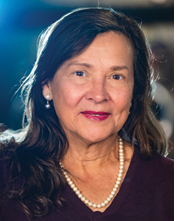
Naomi Halas
Rice University, USA
For her design, fabrication, and demonstration of nanoparticles with specific optical and physical properties, the widespread application of which enables advances in fields including cancer therapy, water security and light-driven chemistry
Naomi Halas received her Ph.D. in physics at Bryn Mawr College, USA. She was a graduate research fellow at IBM Yorktown, USA, and a postdoctoral fellow at AT&T Bell Laboratories, USA. She is currently a University Professor and the Stanley C. Moore Professor of Electrical and Computer Engineering at Rice University.
She was the first person to introduce structural control into the synthesis of metal nanoparticles to control their optical properties. She pursues studies of nanophotonics and its applications in biomedicine, optoelectronics, chemical sensing, photocatalysis and solar water treatment.
Halas is the author of more than 350 refereed publications, has more than 25 issued patents and has presented more than 600 invited talks. She is a Fellow of Optica, APS, AAAS, IEEE, SPIE, the Materials Research Society and the Royal Society of Chemistry. She has won several awards, including Optica’s R.W. Wood Prize, the Frank Isakson Prize, the Mildred Dresselhaus Prize, the Willis E. Lamb Award, and Spiers Memorial Award. She is a member of the US National Academy of Sciences, the National Academy of Engineering and the American Academy of Arts and Sciences.
William F. Meggers Award
In recognition of outstanding work in spectroscopy
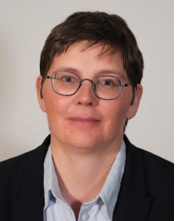
Nathalie Picqué
Max-Born Institute, Germany
For pioneering broadband molecular spectroscopy with interfering frequency combs
Nathalie Picqué received her Ph.D. in physics from the University Paris-Saclay, France. She is currently director at the Max-Born Institute for Nonlinear Optics and Short Pulse Spectroscopy and a professor of physics at the Humboldt University, Berlin, Germany. Previously, she was a research group leader at the Max Planck Institute of Quantum Optics, Germany, and a researcher at the Centre National de la Recherche Scientifique, France.
She is a pioneer in the development and application of techniques of spectroscopy over broad spectral bandwidths with optical frequency combs. These methods include dual-comb spectroscopy and Fourier-transform spectroscopy with a laser frequency comb. She showed how to interrogate and analyze broadband molecular spectra with thousands or millions of comb lines simultaneously. Dual-comb interferometers without moving parts perform direct frequency measurements over a wide span, with no geometric limitations to resolution. They have created new opportunities for precision spectroscopy and for miniaturized spectrometers on photonic chips. Dual-comb spectroscopy has now spread around the world.
Picqué is an Optica Fellow and has received several awards, including the Gentner-Kastler Prize, the Falling Walls Science Breakthrough of the Year Prize in Physical Sciences, and the DeWitt-Morette Prize of the French Academy of Sciences.
David Richardson Medal
In recognition of significant contributions to optical engineering, primarily in the commercial and industrial sector

Radhakrishnan Nagarajan
Marvell, USA
For the successful manufacturing and commercialization of InP- and Si-based photonic integrated circuits for use as optical interconnects with a wide range of applications
Radhakrishnan Nagarajan received his B.Eng. from the National University of Singapore, his M.Eng. from the University of Tokyo, Japan, and his Ph.D. from the University of California, Santa Barbara, USA, all in electrical engineering. He is currently the senior vice president and chief technology officer of optical platforms at Marvell, where he manages the development of the company’s optical platform technology and products. Concurrently, he is a visiting professor at the Department of Electrical and Computer Engineering at the National University of Singapore. Nagarajan joined Marvell from Inphi, where he was the senior vice president and chief technology officer of platforms. Prior to that, he was a Fellow at Infinera.
An insightful engineer and outstanding innovator and mentor, Nagarajan’s ability to move from concept to commercialization and deployment continues to have a profound impact on our industry. Nagarajan’s other recognitions include the IEEE/LEOS Aron Kressel Award and the Indium Phosphide and Related Materials (IPRM) Award for breakthrough work in the development and manufacturing of large-scale photonic integrated circuits. In 2024, he was named to the Electro Optics Photonics100, which honors the industry’s most innovative people. He has been awarded 245 US patents and is a Fellow of Optica, IEEE and the UK’s Institution of Engineering and Technology (IET).
Kevin P. Thompson Optical Design Innovator Award
In recognition of contributions to lens design, optical engineering or metrology at an early career stage

Samuel Steven
Apple Inc., USA
For the introduction of nodal aberration theory to the design of ophthalmic imaging instrumentation and the generalization of the Alvarez lens to achieve tunable correction of chromatic aberrations
Samuel Steven received his B.S. in optical engineering from the University of Rochester, USA, his M.S. in technical entrepreneurship and management from the Simon Business School and Hajim School of Engineering at the University of Rochester, and his Ph.D. in optics from The Institute of Optics at the University of Rochester. He is currently an optical design engineer and research scientist at Apple Inc.
His doctoral work focused on the design of ophthalmic-imaging instrumentation, in which he explored the aberration theory for unobscured reflective relay systems and introduced a generalized Alvarez lens system to achieve tunable correction of chromatic aberrations. Steven’s work has advanced the field of retinal imaging and helped expand our understanding of vision and our ability to develop treatments to prevent blindness. In his role at Apple, he continues to solve challenging optical-design problems focusing on the design and prototyping of novel technologies.
Edgar D. Tillyer Award
In recognition of distinguished work in the field of vision
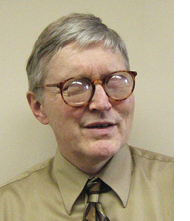
Gordon E. Legge
University of Minnesota Twin Cities, USA
For revolutionizing the field of low-vision research and applying this knowledge to aid and improve reading and mobility in people with low vision
Gordon E. Legge received his master’s in astronomy and his Ph.D. in experimental psychology from Harvard University, USA, and spent a postdoctoral year at the Physiological Laboratory, Cambridge University, UK. He is currently director of the Minnesota Laboratory for Low-Vision Research, a founding member and scientific co-director of the Center for Applied and Translational Sensory Science (CATSS), and Distinguished McKnight University Professor of Psychology and Neuroscience.
His research concerns visual perception, with primary emphasis on low vision. His projects focus on the roles of vision in reading and mobility, and the impact of impaired vision on the organization of visual centers in the brain. He addresses these issues with psychophysics, computational modeling and brain imaging (fMRI).
Legge and his colleagues developed the MNREAD Reading-Acuity Chart, which is the gold standard for assessment of reading vision. He served on the NIH National Advisory Eye Council and was a member of a US National Research Council committee involved with the redesign of US currency bills to enhance visual accessibility.
Legge has received multiple awards including an NIH MERIT award, the Lighthouse Pisart Vision Award, the Charles F. Prentice Medal Award, the Helen Keller Prize for Vision Research and the James McKeen Cattell Award. He is a Fellow of AAAS, the Association for Psychological Science and the Association for Research in Vision and Ophthalmology.
Charles Hard Townes Medal
In recognition of contributions to quantum electronics
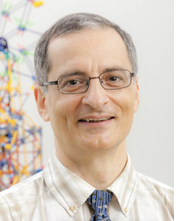
Franco Nori
RIKEN, Japan, and University of Michigan, USA
For his many fundamental contributions to quantum optics, quantum information processing and quantum circuits, and for the development of key quantum software tools
Franco Nori received his Ph.D. in physics from the University of Illinois, USA, and then completed postdoctoral research work at the Institute for Theoretical Physics (now KITP) of the University of California, Santa Barbara, USA. He joined the faculty of the University of Michigan, Ann Arbor, becoming a full professor and research scientist in its physics department. He is also a RIKEN chief scientist, leading its Theoretical Quantum Physics Laboratory and serving as a team leader of the Quantum Information Theory Research Team in the RIKEN Quantum Computing Center.
Nori’s research group has done pioneering interdisciplinary studies at the interface between quantum optics, quantum electronics, quantum information, nanoscience, optomechanics, dissipative quantum open systems, superconducting quantum circuitry for quantum computing, photonics, atomic physics with quantum circuits, computational physics and condensed-matter physics.
Nori has received several awards including the W.E. Lamb Medal, the Matsuo Foundation’s Prize for Research in Physics, and the Prize for Science of the Minister of Education, Culture, Sports, Science and Technology, Japan. He is a Fellow of Optica, APS, AAAS and IOP. He is also an elected Member of the Academia Europaea and the Latin American Academy of Sciences and a Foreign Member of the Swedish Royal Society of Arts and Sciences, Gothenburg, Sweden.
He has been listed by the Web of Science as a highly cited researcher in physics for seven consecutive years, from 2017 to 2023 (less than 0.1% of physicists are selected for this listing). Nori has more than 66,000 citations and an h-index greater than 117 on the Web of Science, and more than 92,000 citations and an h-index above 134 on Google Scholar.
Optica Treasurer’s Award
In recognition of an Optica employee who contributes significantly to organizational excellence, promotes and enacts innovative solutions, or exemplifies inspirational leadership

Nathaniel (Nate) Jones
Optica, USA
For outstanding dedication to maintaining the Optica headquarters and invaluable support of staff through a variety of projects ranging from meeting set-up to package delivery
Nate Jones joined Optica in 2008 and is currently the facility coordinator. Over the years, he has taken on more responsibilities and has become an integral part of our organization. Jones is resourceful and diligent in coordinating facilities support for all aspects of Optica. A well-respected team player, he helps to keep Optica staff on task. During his off-hours, he coordinates domestic and international vacations for his friends, and just as he does when in the office, he’s always willing to go above and beyond when asked for help.
John Tyndall Award
In recognition of contributions to fiber optic technology (co-presented with the IEEE Photonics Society)
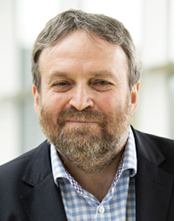
David Richardson
Microsoft, UK
For pioneering contributions to the development of optical fibers and their applications and commercialization in fiber lasers and optical communications
David Richardson received his B.S. and Ph.D. in fundamental physics from Sussex University, UK. Prior to joining Microsoft, he was a professor at the Optoelectronics Research Centre (ORC), Southampton University, UK, and served as deputy director of the ORC from 2000 to 2023. He was awarded a Royal Society University Research Fellowship in 1991 in recognition of his pioneering work on short-pulse fiber lasers.
A prominent figure in the international photonics community, Richardson has been instrumental in advancing the field of photonics, with contributions spanning fiber lasers, space-division multiplexed fiber transmission and innovative optical fibers. He has enjoyed considerable success as an entrepreneur, co-founding SPI Lasers Ltd. (acquired by Trumpf in 2008) and Lumenisity Ltd. (acquired by Microsoft in 2022). He has also led several government-funded collaborative research programs throughout Europe and as served as a general chair for both OFC and ECOC. He has co-authored more than 550 peer-reviewed journal papers and been awarded over 20 patents.
Richardson was elected Fellow of the Royal Academy of Engineering and the Royal Society. He is a Fellow of the IEEE, Optica, and IET. He has won various awards for his research, including the IET Team Innovation Award, the Royal Society Wolfson Research Merit Award and the Harold Hartley Award from the Institute of Measurement and Control. He is also corecipient of the Horizon 2020 “Breaking the Barriers in Optical Communications” Inducement Prize.
Herbert Walther Award
In recognition of distinguished contributions in quantum optics and atomic physics as well as leadership in the international scientific community (co-presented with Deutsche Physikalische Gesellschaft)
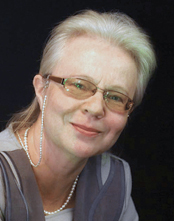
Olga Kocharovskaya
Texas A&M University (TAMU), USA
For field-opening contributions to lasing without inversion and electromagnetically induced transparency and for theory and experiments that initiated the field of gamma-ray quantum optics
Olga Kocharovskaya is a distinguished professor of physics at TAMU. Her research is in the areas of quantum and nonlinear optics, laser physics, X-ray optics, attosecond physics and quantum information science, and her work has developed novel understandings of the way energy is transferred in atomic systems.
Prior to joining the TAMU faculty, Kocharovskaya held the leading-scientist position at the Institute of Applied Physics, Russian Academy of Sciences, Russia, and the adjunct independent researcher position at the Université Libre de Bruxelles, Belgium. Kocharovskaya received her Ph.D. from the N.I. Lobachevsky Nizhny Novgorod State University, Russia, and D.Sc. (Habilitation) degree from the Institute of Applied Physics, Russian Academy of Sciences. She is a dedicated volunteer and mentor, serving on editorial boards, international advisory boards and award committees and organizing international conferences.
A trailblazer in her field, Kocharovskaya was the first woman professor in the TAMU physics department and is the first woman to receive the Walther Award. A Fellow of Optica and APS, she has received several additional honors, including the inaugural Willis Lamb Medal for Laser Physics and Quantum Electronics, the Association of Former Texas A&M Students Distinguished Achievement Award in Research, and the Texas A&M University Distinguished Professor Award.
R.W. Wood Prize
In recognition of an outstanding discovery, scientific or technological achievement or invention
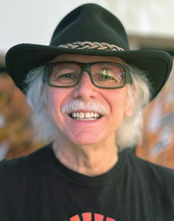
Rick Trebino
Georgia Institute of Technology, USA
For his invention and development of techniques for the ever more complete and rigorous measurement of ultrashort light pulses, which have enabled a wide range of new applications across many fields
Rick Trebino received his Ph.D. from Stanford University, USA. He is currently the Eminent Scholar Chair of Ultrafast Optical Physics at Georgia Tech. Previously, he was at Sandia National Laboratories, USA.
His award-winning research involves developing techniques for measuring light with ever shorter and more complex ultrafast temporal and microscopic spatial variations. He is best known for frequency-resolved optical gating, the first technique—and still the gold standard—for measuring arbitrary ultrashort pulses in time.
Trebino’s more recent inventions have extended measurement capability to the complete spatiotemporal electromagnetic field of even highly complex ultrashort pulses. Also—like R.W. Wood—he has investigated scientific self-deception, particularly in pulse measurement. In addition to his research contributions, he is an outstanding educator and freely provides his elegant, entertaining and fully narrated multimedia entire-course video lectures to the world via his website to encourage the creation and dissemination of free high-quality video lectures in academia in general.
Trebino has received numerous prizes for his pioneering contributions to optics and physics and education, including the Esther Beller Hoffman Medal. He is a Fellow of Optica, APS, AAAS and SPIE.
Call for 2025 Award and Medal Nominations
Join us in celebrating the field’s technical, research, engineering, education, business, leadership and service accomplishments. Nominations for most 2025 awards and medals are due 1 October. Please take advantage of this unique opportunity to recognize your colleague’s extraordinary achievements. Visit optica.org/AwardCategories to find the most appropriate recognition.
Thank You, 2024 Award Selection Committee Members!
Many thanks to these volunteers who served on the award selection committees. We greatly appreciate your time, effort and expertise.
Frederic Ives Medal/Jarus W. Quinn Prize
Peter Delfyett, Chair
Andrea Armani
Saša Bajt
John Harvey
Kaoru Minoshima
Margaret Murnane
Esther Hoffman Beller Medal
Francesco Da Ros, Chair
Amol Choudhary, Past Chair
C. Martijn de Sterke
Ivy Krystal Jones
Danuta Sampson
Maria Vinas
Max Born Award
Alejandro Cornejo-Rodriguez, Chair
Clara Rivero-Baleine, Past Chair
Edward Buckley
Nader Engheta
Ebrahim Karimi
Igor Meglinski
Mircea Mujat
Stephen D. Fantone Distinguished Service Award
Jennifer Mayfield, Chair
Alexander Sawchuk, Past Chair
Samuel Bradley
Wilhelm Kaenders
Jose Javier Sánchez-Mondragón
Hannah Walter-Pilon
Michael S. Feld Biophotonics Award
Sophie Brasselet, Chair
Animesh Jha, Past Chair
Ling Fu
Sung-Ho Han
Laura Marcu
Arjun Yodh
Joseph Fraunhofer Award/Robert M. Burley Prize
Abbie Watnik, Chair
Fernando Mendoza Santoyo, Past Chair
Jennifer Hastie
Lakshminarayan Hazra
Pantazis Mouroulis
Demetri Psaltis
Sarun Sumriddetchkajorn
Joseph W. Goodman Book Writing Award (Joint with SPIE)
Christian Brosseau*
Daniela Dragoman*
Kert Edward
Michael Eismann
Paul F. McManamon*
Nick Holonyak Jr. Award
Dawn Tan, Past Chair
Mario Agio
Ya Cheng
Eugenio Mendez
Carmen Menoni
Lluis Torner
Robert E. Hopkins Leadership Award
Maryna Meretska, Past Chair
Robert Breault
Cristina Masoller
Salah Obayya
Joachim Sacher
Edwin Land Medal (Joint with Society for Imaging Science and Technology)
Gerhard Bartscher
Alan Bovik*
Zhigang (Zeke) Fan
Graham Finlayson
Debabrata Goswami*
Bettina Heise*
Scott Silence
Sang Soo Lee Award (Joint with Optical Society of Korea)
Valeria Da Silva*, Chair
Ajoy Ghatak*
John Healy*
Takashige Omatsu
Fabian Rotermund
Seok Ho Song
Emmett N. Leith Medal
Pascal Picart, Chair
Juan Liu, Past Chair
Shanti Bhattacharya
Manuel Guizar-Sicairos
Edmund Lam
Wolfgang Osten
Irina Palchikova
Ellis Lippincott Award (Joint with Coblentz Society and the Society for Applied Spectroscopy)
Igor Aharonovich*, Chair
Shaul Mukamel*
Xiaoyun (Shawn) Chen
Robert Chimenti
Mary Lewis
Curtis Allen Marcott
Adolph Lomb Medal
Izabela Naydenova, Chair
Andrew Weiner, Past Chair
Felipe Beltrán-Mejía
Sandra Biedron
Katherine Calabro
Francesca Calegari
Claire Gmachl
Ido Kaminer
Luciana Kassab
Myrian Tebaldi
Richard Zeltner
Leonard Mandel Quantum Optics Award
Irina Novikova, Chair
Hui Deng
Heejeong Jeong
Franco Nori
Jian-Wei Pan
Susanne F. Yelin
Peter A. Zoller
C.E.K. Mees Medal
Gabrielle Thomas, Chair
Henry Kapteyn, Past Chair
Christine Fernandez-Maloigne
Eric Rosas
Halina Rubinsztein-Dunlop
Rachel Won
Baoli Yao
William F. Meggers Award
Alexander Oraevsky, Past Chair
Hatice Altug
Anne Kelley
Frederic Merkt
Ioan Notingher
Vladislav Yakovlev
David Richardson Medal
Nobuyuki Hashimoto, Past Chair
Xiaoyi Bao
John Canning
Larry Coldren
Golshan Coleiny
Hideo Takino
Kevin P. Thompson Optical Design Innovator Award
Julie Bentley, Chair
Kyle Fuerschbach, Past Chair
Aaron Bauer
Paul Manhart
Anne-Sophie Poulin-Girard
Adriana Szeghalmi
Luiz Tarelho
Edgar Tillyer Award
Angela Brown, Past Chair
Wilson Geisler
Francisco Imai
Katarzyna Komar
Supriyo Sinha
Manuel Spitschan
Charles Hard Townes Medal
Judith Dawes, Chair
Robert Boyd, Past Chair
Aref Chowdhury
Peter Fritschel
Maria Kafesaki
Kartik Srinivasan
Antoinette Taylor
Optica Treasurer’s Award
George Bayz, Chair
Sean Bagshaw
P. Scott Carney
Genaro Montanez
Elizabeth Nolan
Jose Pozo
Elizabeth A. Rogan
Chad Stark
Ryan Strowger
John Tyndall Award (Joint with IEEE Photonics Society)
Deb Kane*, Chair
Roel Baets
Jim Coleman
Joerg-Peter Elbers*
Nicholas Fontaine
Lara Garrett*
Lisa Huff*
Hideyuki Nasu*
Rodney Tucker
Herbert Walther Award (Joint with Deutsche Physikalische Gesellschaft)
Eugene S Polzik*, Chair
Antonio Khoury*
Gaby Slavcheva*
R.W. Wood Prize
Michael Frosz, Chair
John Dudley, Past Chair
Félicie Albert
Baohua Jia
Hong Liu
Hope Michelsen
Federico Rosei
*Denotes Optica representative on joint society committees

